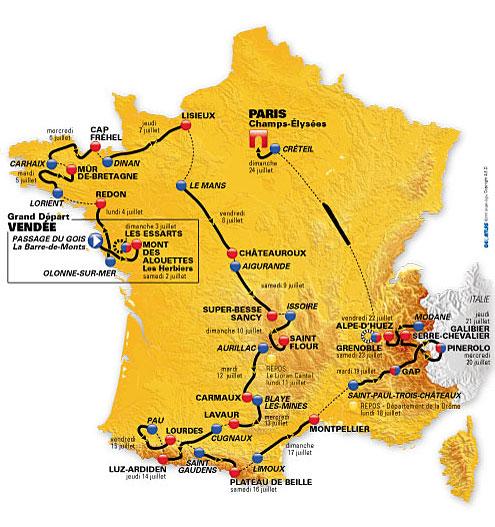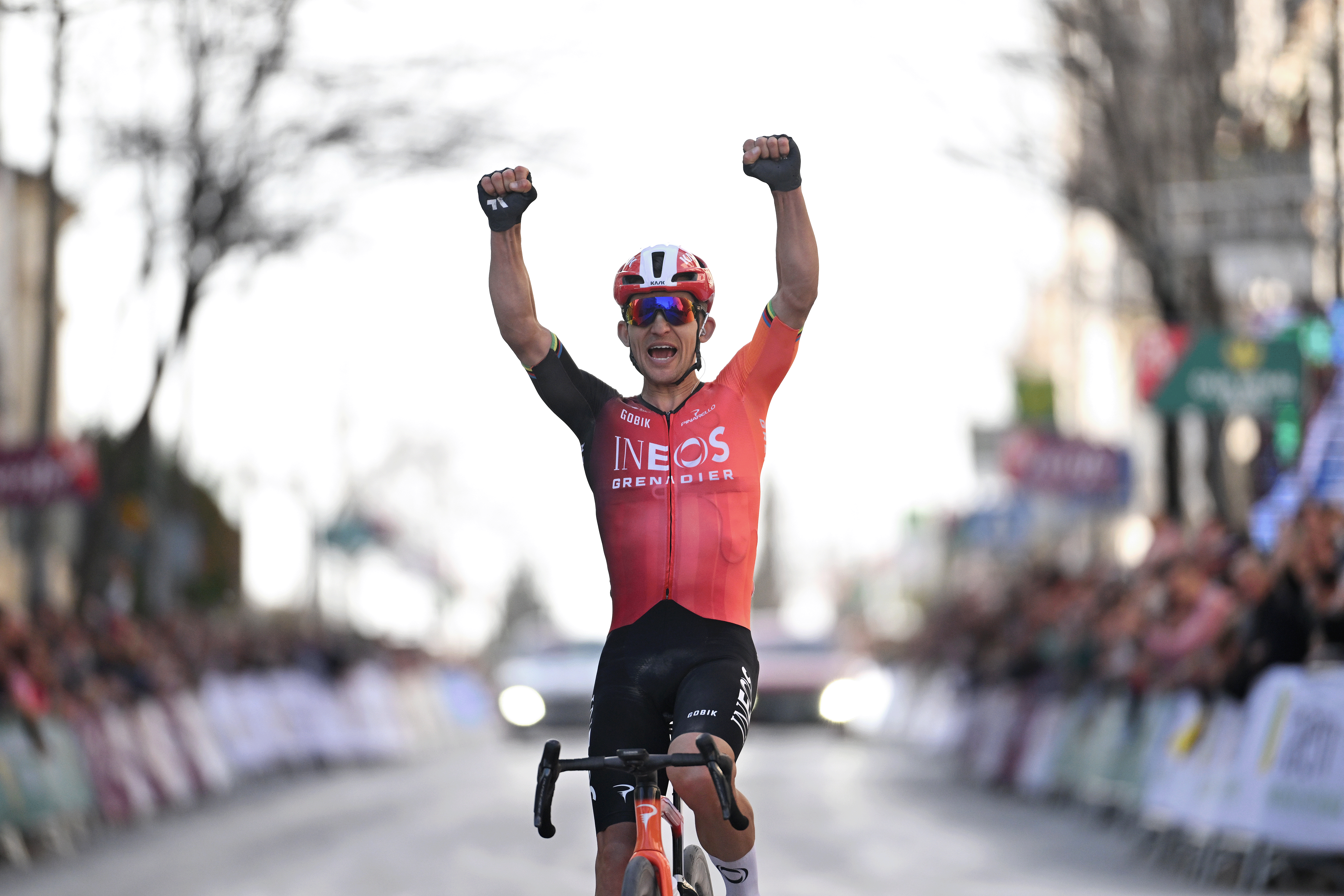Tour de France: Ten great places to watch
From the Passage du Gois to l'Alpe d'Huez

Every year millions of fans travel to France to catch a glimpse of the Tour de France, but where is the best place to see the racing? Here's our insider's guide for the savvy spectator.
Stage 1, Saturday 2 July: Passage du Gois-Mont des Alouettes: Passage at low tide
One of the most spectacular places to see this year’s Tour de France is at the very beginning of the race and comes even before the riders reach the official start point. The stage is preceded by the 4.5km-long Passage du Gois, which links the Ile de Noirmoutier to mainland France at low tide. The riders will be lined out and riding at a very modest pace, meaning spectators will be able to see them all including the big-name Tour favourites.
Stage 4, Tuesday 5 July: Lorient - Mûr-de-Bretagne: The summit of The Breton Alpe d’Huez
The day after a fest-noz (a Breton night-time festival) is always a special holiday in central Brittany and this year it coincides with the first ever finish at the summit of what the locals call ‘the Breton Alpe-d’Huez.’
The climb ramps up at more than 10 per cent, adding spice to the race after the long straight road that leads to the Mûr-de-Bretagne. Position yourself next to the flamme rouge that marks the final kilometre, to see the riders fight for stage victory.
Stage 5, Wednesday 6 July: Carhaix-Cap Fréhel: A stunning cliff-side setting
The latest race content, interviews, features, reviews and expert buying guides, direct to your inbox!
The Tour de France organisers often include certain sections of the race route near the sea in the hope that the winds will provide some spectacular racing. The wind didn’t blow across the Dutch dykes last year but they could be back in the English on 6 July. The majestic setting of the granite cliffs at Fréhel-plage could be the best place to see the peloton split apart in the wind before hitting the final climb to the old town.
Stage 6, Thursday 7 July: Dinan-Lisieux: The call of Mont-Saint-Michel
After French vineyards dominated the 2010 Tour de France, one of the themes that seem to have inspired the organisers this year is visiting the country’s most prestigious places of worship.
Stage six ends in Lisieux and the Basilica of Sainte-Thérèse is the second most visited religious place in France after Lourdes, which hosts the finish of stage 13. As the Tour heads out of Brittany and into Normandy (after 60km) the riders will have a clear view towards Mont-Saint-Michel.
Stage 9, Sunday 10 July: Issoire - Saint-Flour: The volcanic Pas de Peyrol
After the high-speed finishes of the first week, the riders will be confronted with some impressive mountains on the second Sunday of the Tour, including Pas de Peyrol: the highest mountain pass in the Massif Central.
Its summit, at an altitude of 1589m, is reached by a 12.4km climb that rises at an average of 4.3% on the road from Dienne and Lavigerie. The best place to see the race is undoubtedly just above the sign that announces the final section of the climb, which is significantly tougher than anything that has gone before: 1.75km at 9.4 per cent.
Stage 12, Thursday 14 July: Cugnaux - Luz-Ardiden: The first time over the Hourquette d’Ancizan
It is Bastille Day on July 14 and so a special day for all of France. Before tackling the legendary Tourmalet and Luz-Ardiden, the riders’ first taste of the Pyrenees comes via the Hourquette d’Ancizan, a climb that has never featured on the Tour de France before. It is 14.5km of steady but difficult climbing after they leave the village of Ancizan (‘hourquette’ is the local Pyrenean word for a col), 5km beyond Arreau. The area is wild and beautiful, complete with the King of the Mountains banner placed near an old stone house.
Stage 13, Friday 15 July: Pau-Lourdes: A visit to Lourdes
Dropping back down from the Aubisque – the only difficulty of the day but a huge one nevertheless – the Tour de France will be reminded that it is on an endless pilgrimage. However, the number of riders who are religious is a lot fewer than when Gino Bartali was known as Gino the Pious.
The Italian won the only previous stage to finish in Lourdes, in 1948. This time the stage finishes above the town’s holy sites and the frequently visited grotto. Spectators should watch for the riders to appear at the end of the Boulevard Lapacca.
Rest day, 18 July: Drôme: Autographs on the rest day
Rest days, as they are now called, give fans the chance to ask riders for autographs. This year’s second rest day near Orange in the Drôme region is better suited for this than the first in the Massif Central because the riders will not be training for any significant amount of time. At most they will ride for two hours, and even then it will be pretty laid back. For the rest of the day it will be possible to meet them, sometimes even with their families, around the delightful hotels in the Drôme.
Stage 18, Thursday 21 July: Pinerolo - Galibier Serre-Chevalier: Descent of the Angel
The summit finish on the Galibier will be the highest in the history of the Tour de France and the highest point in this year’s race, the Col Agnel, is also on stage 18 and tops out at 2,744m. It links Italy and the Mont Viso region with France and the Queyras natural park. This is a very tough stage. Many fans gather on the climbs but seeing the riders flying down the Guil valley is also a real experience. Or watch them speed down from the summit at Fongillarde.
Stage 19, Friday 22 July: Modane - Alpe-d’Huez: The Henri Desgrange memorial
In the centenary of the Tour de France’s first visit to the Alps, the riders get a double dose of the Galibier. On this second occasion they tackle the legendary climb via the Col du Télégraphe. Just after they pass over the summit, there is a monument to Henri Desgrange at the roadside, built in 1948 thanks to public donations. The dedication on the monument reads: “To the glory of Henri Desgrange, 1865-1940, former director of the newspaper L’Auto, creator of cycling’s Tour de France”. For Desgrange the Galibier more important than every other climb ever used in the Tour de France.
This article was taken from the Official Tour de France Guide. UK residents can purchase a copy here.
